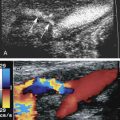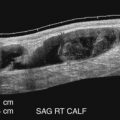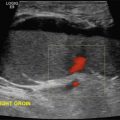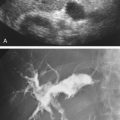Introduction
Ensuring the quality of studies performed and interpreted in the vascular laboratory is a cornerstone of vascular laboratory management. This chapter will review the processes for credentialing of personnel and accreditation of facilities and the core components of a quality improvement (QI) program. In addition, examples of coordinated efforts to standardize the performance and interpretation of noninvasive vascular studies at the national level will be presented.
Credentialing
In order to produce high-quality studies that can be integrated into the care of patients with vascular disease, it is imperative that individuals who perform and interpret vascular studies have adequate theoretical and hands-on training and experience. Vascular imaging studies, both duplex examinations and physiologic testing studies, are highly dependent on the skill of the sonographer/technologist performing the examination because producing complete studies with adequate quality images is essential for physician interpretation. In addition, the physician must have adequate training and experience in vascular testing in order to accurately interpret the studies. For physicians, some postgraduate training programs include dedicated rotations with training in the interpretation of vascular ultrasound and physiologic testing studies, but the depth and extent of exposure varies widely by subspecialty and environment. Although physicians must be licensed to practice medicine, few US states currently require licensure for vascular sonographers/technologists. Distinct from licensure, credentialing is the process used to certify the qualifications of individuals to either perform or interpret vascular studies.
There are vascular-specific credentials available for both sonographers/technologists and physicians ( Table 32.1 ), with the most common being the Registered Vascular Technologist of the American Registry for Diagnostic Medical Sonography, the Registered Vascular Specialist of Cardiovascular Credentialing International, and the Registered Physician in Vascular Interpretation of the Alliance for Physician Certification and Advancement. These credentials require applicants to meet set prerequisites of training and experience, including documentation of scanning or interpreting a minimum number of studies, followed by a validated credentialing examination and maintenance of the credential, generally through continued medical education. Historically, the Registered Vascular Technologist credential was the only mechanism for formal credentialing of physicians in vascular testing, but the Registered Physician in Vascular Interpretation credential was launched in 2006 as a dedicated process for credentialing physician interpretation (rather than performance) of vascular studies. Though universal credentialing has not been mandated, some Medicare carriers have linked reimbursement to studies being performed by a credentialed sonographer/technologist or within an accredited vascular laboratory, and a limited number of non-Medicare third-party payers have instituted requirements for credentialing of sonographers/technologists. Enforcement of these requirements is variable. As of January 31, 2017, the Intersocietal Accreditation Commission (IAC) has required that all technical personnel within its accredited vascular laboratories have an appropriate vascular credential.
- •
Credentialing of sonographers/technologists and physicians can be obtained through different pathways.
- •
In some scenarios, reimbursement of noninvasive vascular testing by the Centers for Medicare and Medicaid Services has been linked to sonographer/technologist credentialing.
| Sonographer/technologist credentials with associated credentialing organization |
|
| Physician credentials with associated credentialing organization |
|
a Since 2016, Inteleos is the governing umbrella organization for both ARDMS and APCA.
Accreditation
Vascular laboratory accreditation is the process by which a testing facility is certified as having met certain standards of quality as determined by the accrediting organization. There are currently two organizations in the United States that specifically accredit vascular laboratory/vascular ultrasound facilities, the IAC and the American College of Radiology (ACR). Though the two programs have different requirements and emphasis, applications for accreditation through both programs share some common features, including: (1) review of qualifications and/or credentials of medical and technical staff; (2) review of laboratory equipment including a quality control program; (3) requirement for presence of laboratory diagnostic criteria for vascular studies; (4) requirement of a facility QI program; (5) minimum standards for reporting of test results; and (6) submission of selected case studies along with finalized reports for organizational review. As with credentialing, a national requirement for vascular laboratory accreditation has not been achieved. The Medicare Improvements for Patients and Providers Act, which was passed in 2008 and enacted in 2012, required accreditation of facilities performing advanced diagnostic imaging for Medicare beneficiaries such as computed tomography (CT), magnetic resonance imaging (MRI), and nuclear medicine, but excluded ultrasound along with x-ray, fluoroscopy, and mammography from this mandate. As discussed earlier, some Medicare carriers have a credentialing or accreditation requirement, though enforcement of this is limited, and only a few non-Medicare third-party payers have instituted requirements for the accreditation of testing facilities. Based on the Centers for Medicare and Medicaid Services data from 2011, only 13% of outpatient facilities billing Medicare for vascular testing studies were accredited by IAC. Data reporting the percentage of vascular testing facilities accredited by ACR, or facilities accredited by either accrediting organization, have not been published.
Intersocietal Accreditation Commission Vascular Testing
The IAC was founded in 1990 as the Intersocietal Accreditation Commission for the Accreditation of Vascular Laboratories. The scope of the organization subsequently expanded to include accreditation programs for facilities in other diagnostic testing areas including echocardiography, nuclear medicine, MRI, and CT. The IAC was established in 2008 through the merger of individual modality-specific divisions including the Intersocietal Commission for the Accreditation of Vascular Laboratories (ICAVL; now known as the IAC Vascular Testing division) under the IAC umbrella organization. In recent years, the IAC has continued to grow and now offers accreditation not only for diagnostic testing facilities, but also for facilities offering therapeutic programs in carotid stenting, venous disease management, cardiac electrophysiology, and cardiovascular catheterization. Throughout its history, the IAC has focused on development of standards and accreditation processes with the input of sponsoring organizations representing the multiple specialties involved in each testing modality or therapeutic program. The IAC Vascular Testing Board of Directors includes leaders representing cardiology, neurology, neurosurgery, radiology (both diagnostic and interventional), vascular technology/sonography, vascular medicine, and vascular surgery. The number of vascular laboratories accredited by the IAC has been relatively stable over recent years, though the total number of sites related to multisite laboratories has continued to grow ( Fig. 32.1 ).

Intersocietal Accreditation Commission accreditation process
IAC offers accreditation of vascular laboratories in six testing areas: (1) extracranial cerebrovascular; (2) intracranial cerebrovascular; (3) peripheral arterial; (4) peripheral venous; (5) visceral vascular; and (6) screening. Additionally, the IAC accredits the overall organization of the testing facility. Core elements of accreditation across the six testing areas are: (1) documentation of the test indication; (2) use of appropriate equipment for the specific test and study protocol; (3) implementation of a written scanning protocol that includes minimum standard components for each type of examination; (4) presence of and adherence to a single set of written (and validated) diagnostic criteria by all interpreting medical staff within the laboratory; and (5) documentation of required elements within the final report. Requirements for accreditation at the organizational level include: (1) defined leadership and infrastructure including medical and technical directors, medical, and technical staff, and availability of adequate support services; (2) adequate training and experience of medical and technical personnel, including mandatory (since 2017) vascular credentials for sonographers/technologists; (3) policies for patient, facility, and technical staff safety, including a program to prevent work-related musculoskeletal disorders; (4) required elements for study reports; (5) archival storage of reports and of study images; (6) defined organizational structure for multisite laboratories including a plan for supervision of technical staff; and (7) presence of a laboratory-wide QI program that includes all areas of testing and in which all staff participate (see Quality Improvement later).
Requirements for IAC accreditation are outlined in published standards that are regularly reviewed by the IAC Vascular Testing Board of Directors and periodically updated with opportunities for public comment. Case studies submitted for each of the testing areas undergo peer review by IAC staff along with the accreditation application, and accreditation decisions are ultimately made by the board of directors. Once granted, IAC accreditation is valid for a period of 3 years, including a midcycle audit. IAC accreditation is a rigorous process: among 603 laboratories that applied for accreditation in vascular testing in 2016, 89% (535/603) of laboratories had one or more issues that delayed accreditation, though 82% (440/535) of these delayed laboratories were ultimately accredited within 90 days. The reasons for delayed accreditation are shown in Fig. 32.2 , with reporting issues being the most common application deficiency. According to the results of an electronic survey of IAC contacts composed primarily of technologists/sonographers who were involved in facility accreditation, the primary perceived benefits of IAC accreditation were related to standardization of study protocols and test interpretation, adherence to published guidelines, and completeness of study reports.
- •
There are currently two accreditation pathways in the United States:
- •
the IAC Vascular Testing division
- •
the ACR
- •
- •
The goals of the accreditation process are to confirm appropriate:
- •
qualifications and/or credentials of medical and technical staff
- •
laboratory equipment and quality control program
- •
laboratory testing protocols and diagnostic criteria for vascular studies
- •
facility QI program
- •
standards for the reporting of test results
- •
- •
Verification of the above is to be confirmed by accreditation documents and the submission of selected case studies with finalized reports.
- •
On the basis of 2011 Centers for Medicare and Medicaid Services data, only 13% of outpatient facilities billing Medicare for vascular studies were accredited by the IAC Vascular Testing division.
Stay updated, free articles. Join our Telegram channel

Full access? Get Clinical Tree








